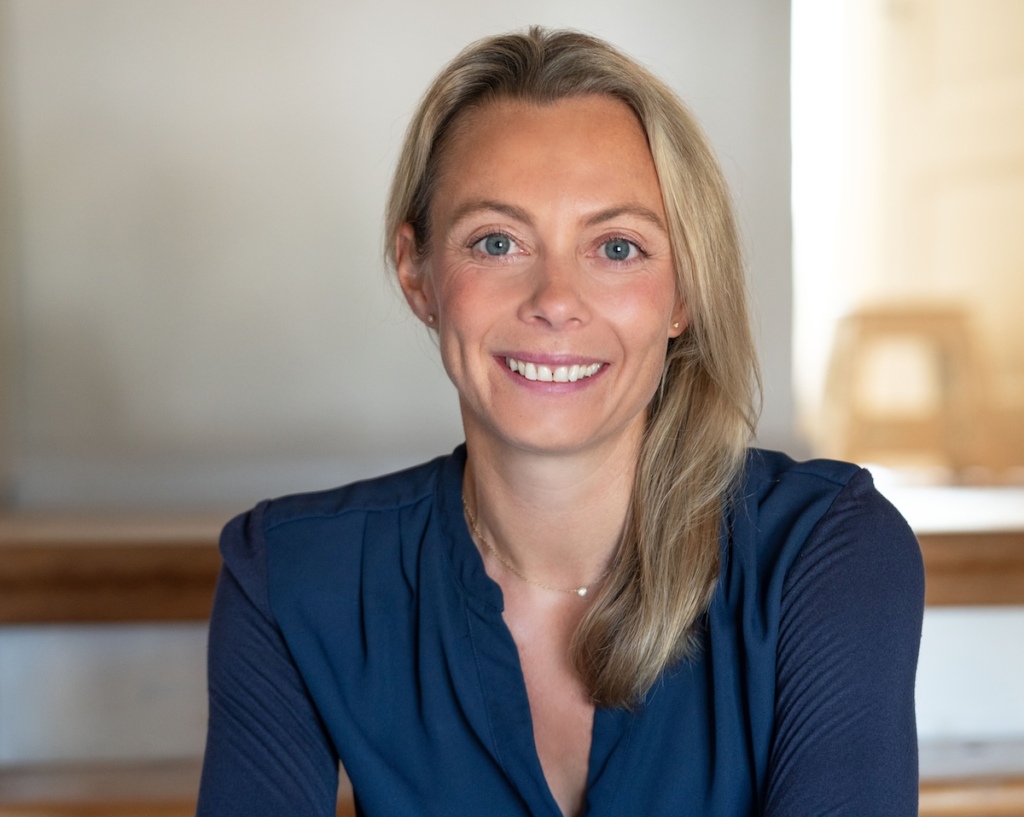
When Natalie Rechberg’s father Dr. Hubertus Rechberd asked a simple question in 1986, he couldn’t have predicted it would launch a multi-generational business that would still be innovating nearly four decades later. “Why are we still doing natural family planning with pen and paper?” he wondered. “Why are we not doing this automatically? There has to be a little computer for this.”
That question led to Germany’s first fertility tracker, created years before smartphones, apps, or the term “femtech” existed. Today, Natalie Rechberg runs Valley Electronics alongside her husband, continuing the family tradition while navigating a changed landscape where venture-backed competitors raise millions and bootstrap founders like herself have become increasingly rare.
“I have been working in female health since 2008,” Rechberg explains. “And I have used our device from when I was 18 years old, tracking my cycle. Back then I was impressed that my father was addressing this area.”
From Hardware Pioneer to Multi-Product Platform
Valley Electronics represents a unique case study in femtech evolution. While most companies in the space launched after 2010 with app-first strategies, Valley Electronics began with dedicated hardware and has systematically adapted to technological shifts while maintaining their core focus on accuracy.
Their flagship product, Lady-Comp, now in its sixth generation, remains deliberately offline. “Women love it because it’s off the grid. You have no internet connection,” Rechberg notes. “And it addresses data privacy concerns.”
The company’s approach reflects a different philosophy from today’s connected device trends. Rather than rushing to add connectivity, they’ve maintained their hardware-first approach while selectively adding digital components where they enhance the user experience.
In 2014, Valley Electronics launched Daysy, their first connected fertility tracker, after Rechberg recognized the potential of mobile apps. “I wrote a patent for the concept. Initially, my father was skeptical about the app ecosystem, but I believed we needed to pursue this direction because it would be more accessible for women to track on the go.”
This generational difference in technology adoption reflects common patterns in family businesses, where different perspectives on innovation can ultimately strengthen product offerings.
Expanding Beyond Fertility
Two years ago, Valley Electronics launched their most ambitious departure from traditional fertility tracking: Teena, a period tracking app designed specifically for teenagers. Unlike their fertility-focused products, Teena deliberately avoids discussing reproduction.
“It’s an educational tool where we guide teenagers to understand their period and see it as a positive experience, focusing on education rather than fertility or reproductive health,” Rechberg explains.
This expansion demonstrates how established players can leverage their cycle expertise to address different life stages and user needs. While many companies focus on single demographics, Valley Electronics’ multi-generational approach allows them to serve users across their entire reproductive lifespan.
The company now operates with three distinct products serving different markets: Lady-Comp for privacy-focused users, Daysy for connected fertility tracking, and Teena for adolescent education.

The Bootstrap Advantage in a VC World
As women’s health funding has grown significantly over the past five years, Rechberg has observed both benefits and drawbacks to remaining independent. “There were times where I wondered about our competitive position, because you have competitors with substantial investor funding who can invest heavily in advertising and product development.”
However, the company’s bootstrap approach has also provided stability and focus that many VC-backed competitors lack. “We don’t have the pressure to achieve unicorn status. That’s simply not our objective,” Rechberg reflects.
This perspective challenges the prevailing wisdom in women’s health technology that rapid scaling and large funding rounds indicate superior companies. Valley Electronics’ steady growth over decades suggests alternative paths to success.
“We experienced periods with minimal competition, where you’re essentially the only voice in the market, which presents its own challenges for visibility,” Rechberg notes. “The current environment is more complex, but we’ve maintained our position. And we’re committed to this market long-term.”
The company’s survival through multiple technology transitions – from dedicated hardware to connected devices to mobile apps – demonstrates the value of sustainable business models over rapid scaling.
Technology Evolution and Market Positioning
Valley Electronics’ technology foundation remains basal body temperature measurement under the tongue, which they consider the gold standard for fertility tracking. As wearable technology has advanced, particularly skin temperature monitoring, Rechberg maintains a measured perspective on new developments.
“We’re actively monitoring advances in skin temperature technology,” she explains. “The technology continues to improve, and we’re exploring how our algorithms might integrate with wearable devices to maintain our accuracy standards.”
This approach to new technology reflects the company’s hardware roots and commitment to accuracy over novelty. Rather than rushing to adopt trending technologies, they evaluate effectiveness before integration.
Right now Valley Electronics is exploring partnerships with wearable manufacturers to potentially integrate their algorithms into other devices. “We’re discussing with other companies how our algorithm could be implemented while maintaining the accuracy we’ve achieved.”
Looking to the Future
As Valley Electronics approaches its fourth decade, the company continues evolving while maintaining its core principles. They’re developing a third generation of Daysy and exploring international expansion through local distribution partnerships. Their business model – one-time purchases without subscription fees – also sets them apart in an industry increasingly focused on recurring revenue models.
Valley Electronics’ story offers a different perspective on innovation timelines and business sustainability. While many women’s health companies focus on rapid disruption, this family business demonstrates the value of steady evolution and long-term thinking.
“We are growing steadily, and while we may not have the same resources as heavily funded competitors, we have maintained our market position. We’ve weathered challenging periods and celebrated successful ones,” Rechberg concludes.
Their approach suggests that sustainable women’s health innovation might require different metrics than traditional startup success stories. Rather than measuring progress through funding rounds and user acquisition, Valley Electronics measures success through decades of serving women across multiple life stages and technology transitions.
As the women’s health technology sector matures, the lessons from multi-generational businesses like Valley Electronics become increasingly relevant. Their story demonstrates that innovation doesn’t always require venture capital, that technology adoption can be thoughtful rather than reactive, and that sustainable businesses can emerge from focusing on user needs rather than market trends.



